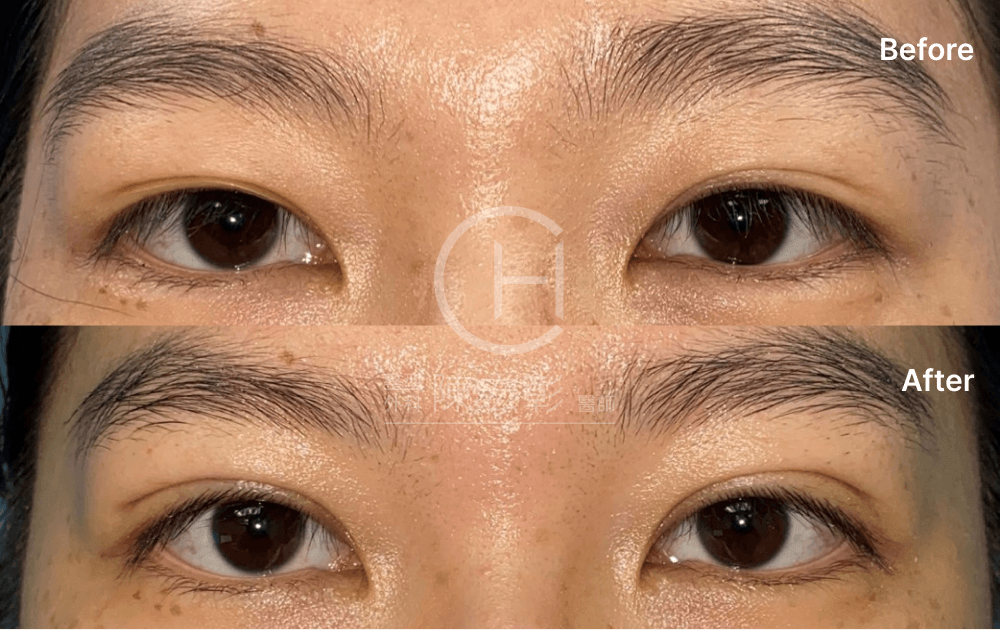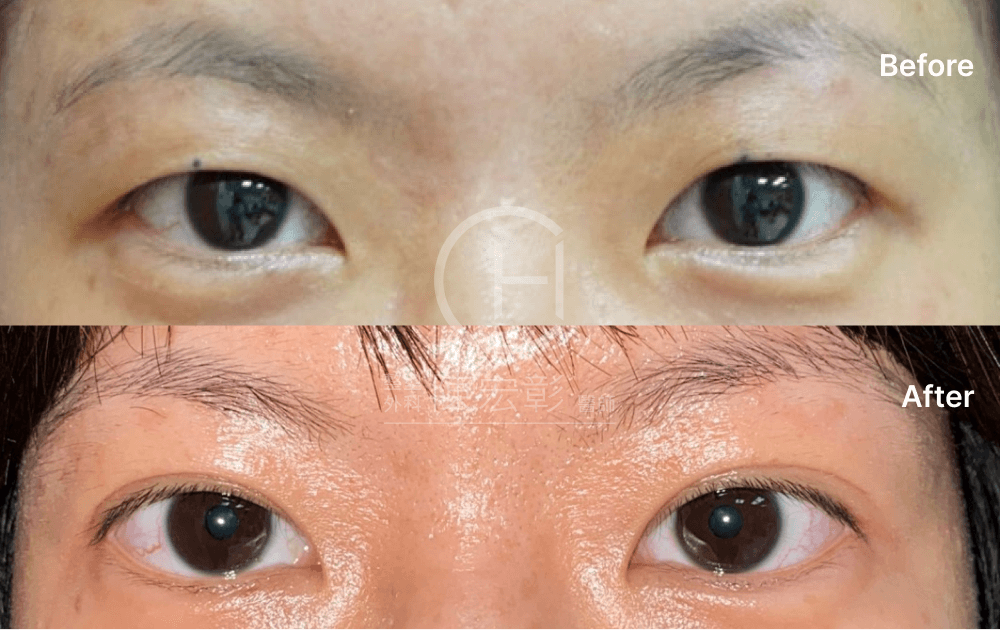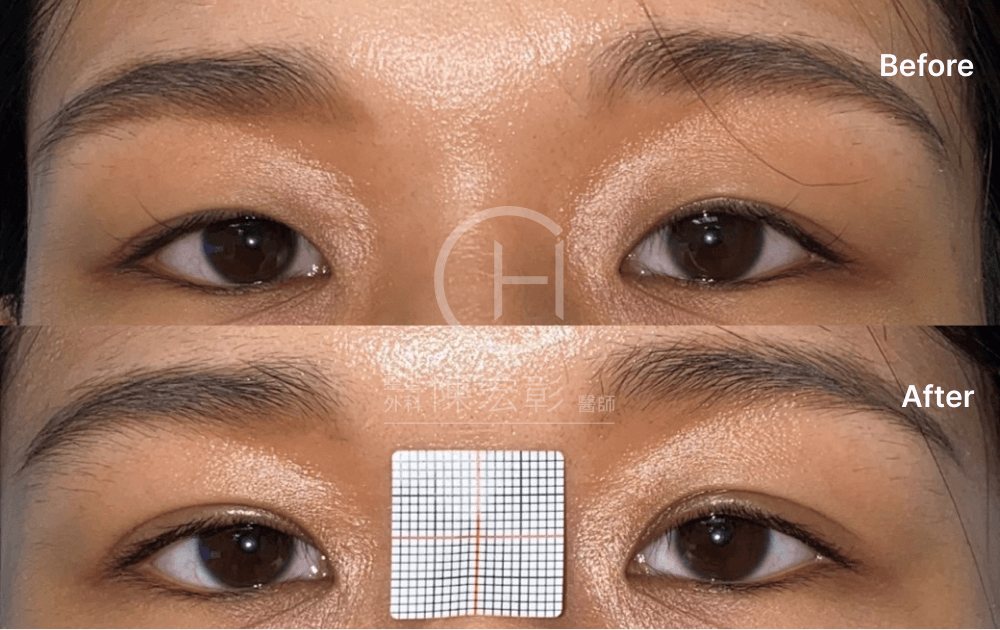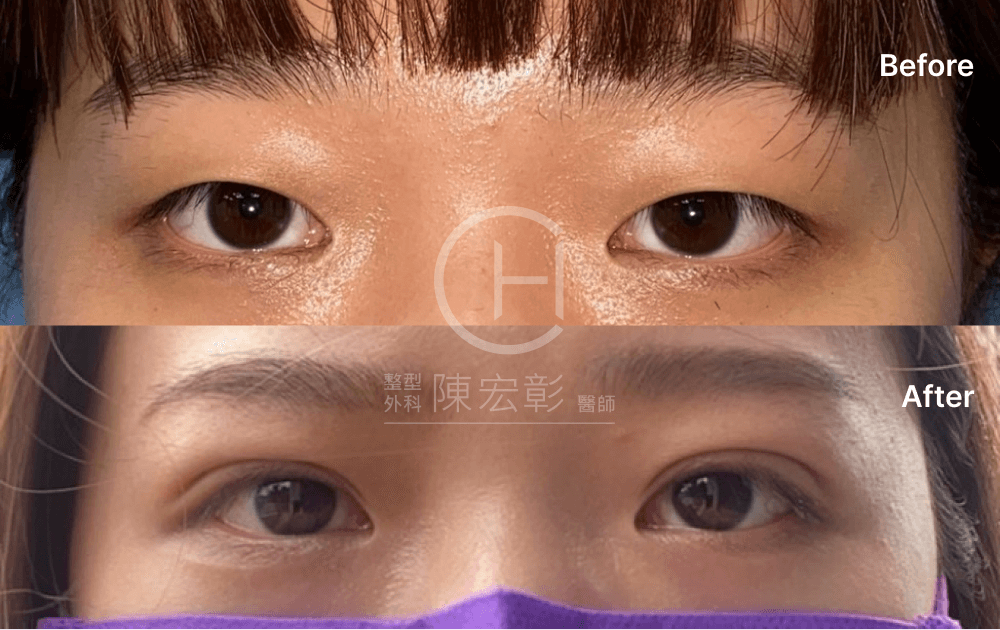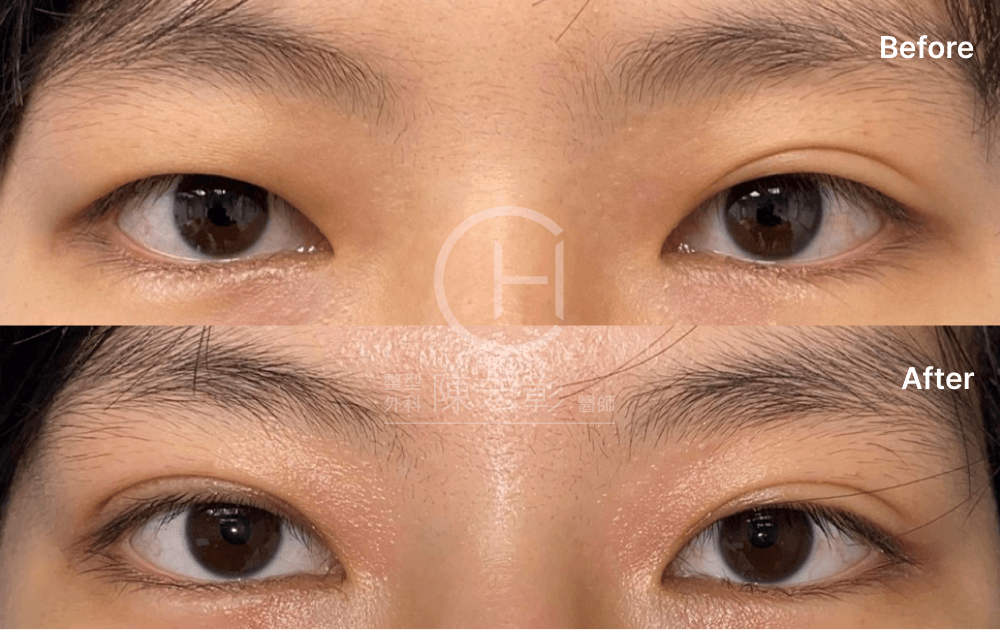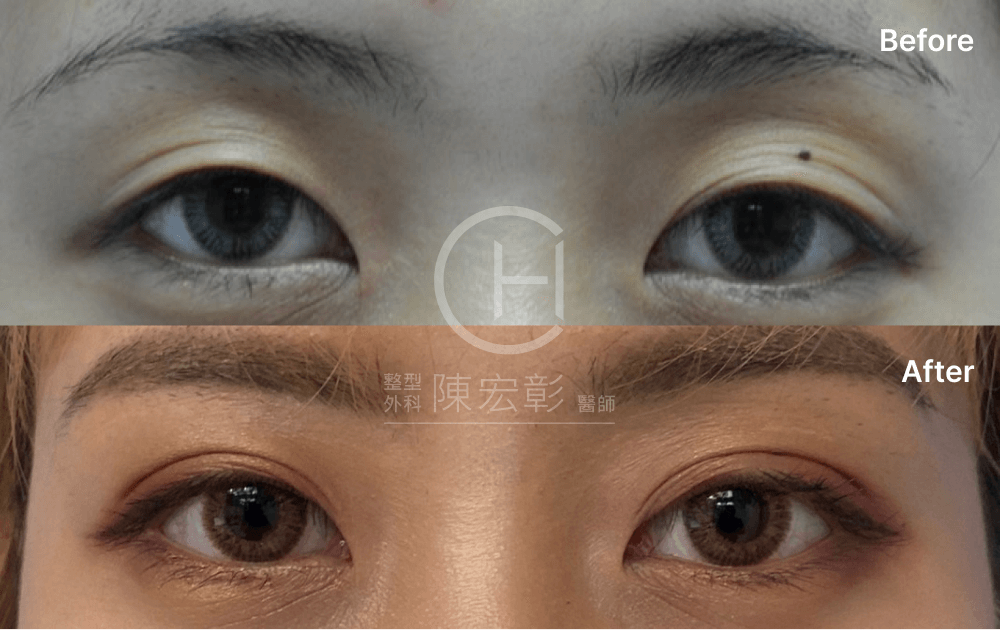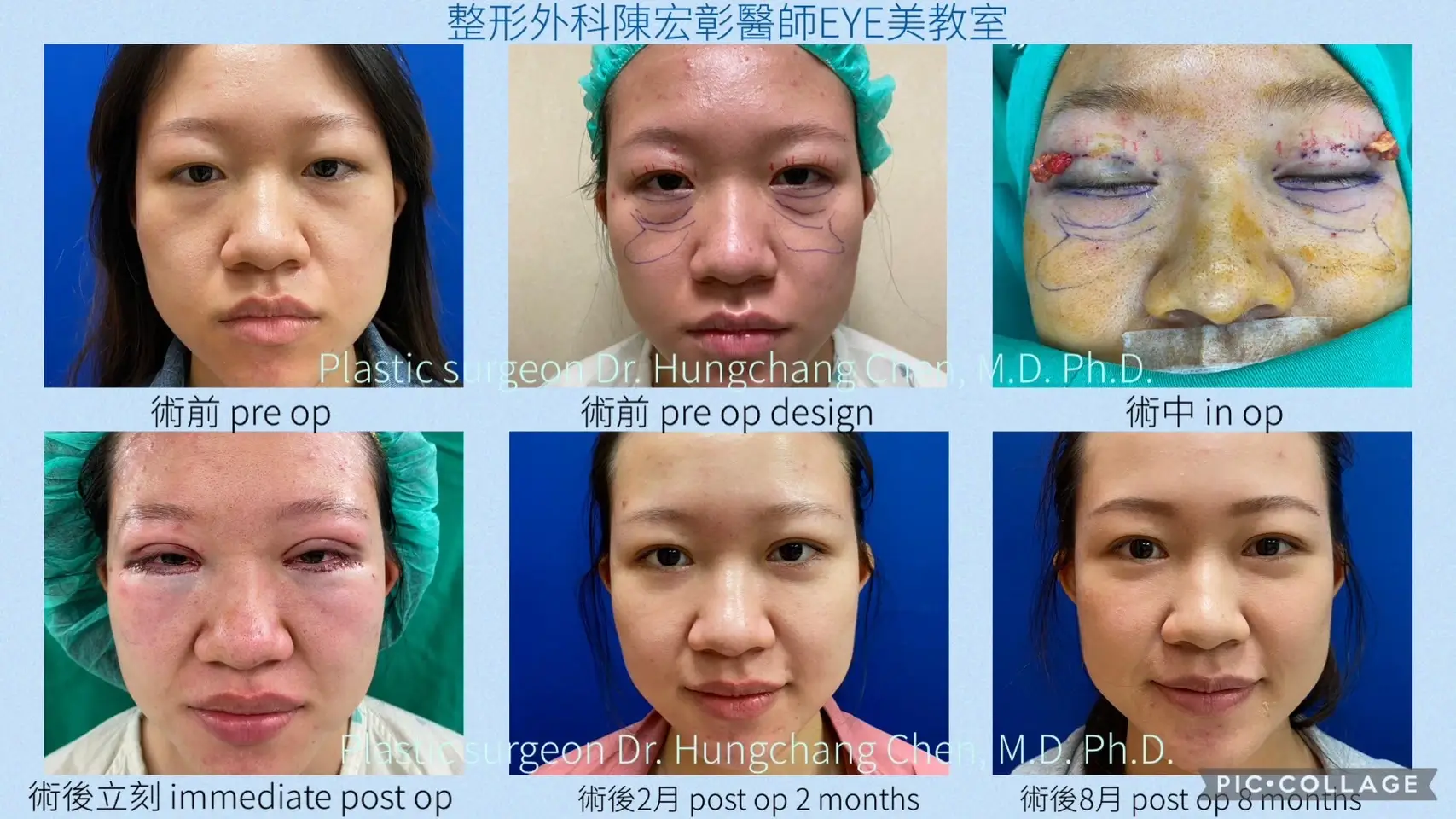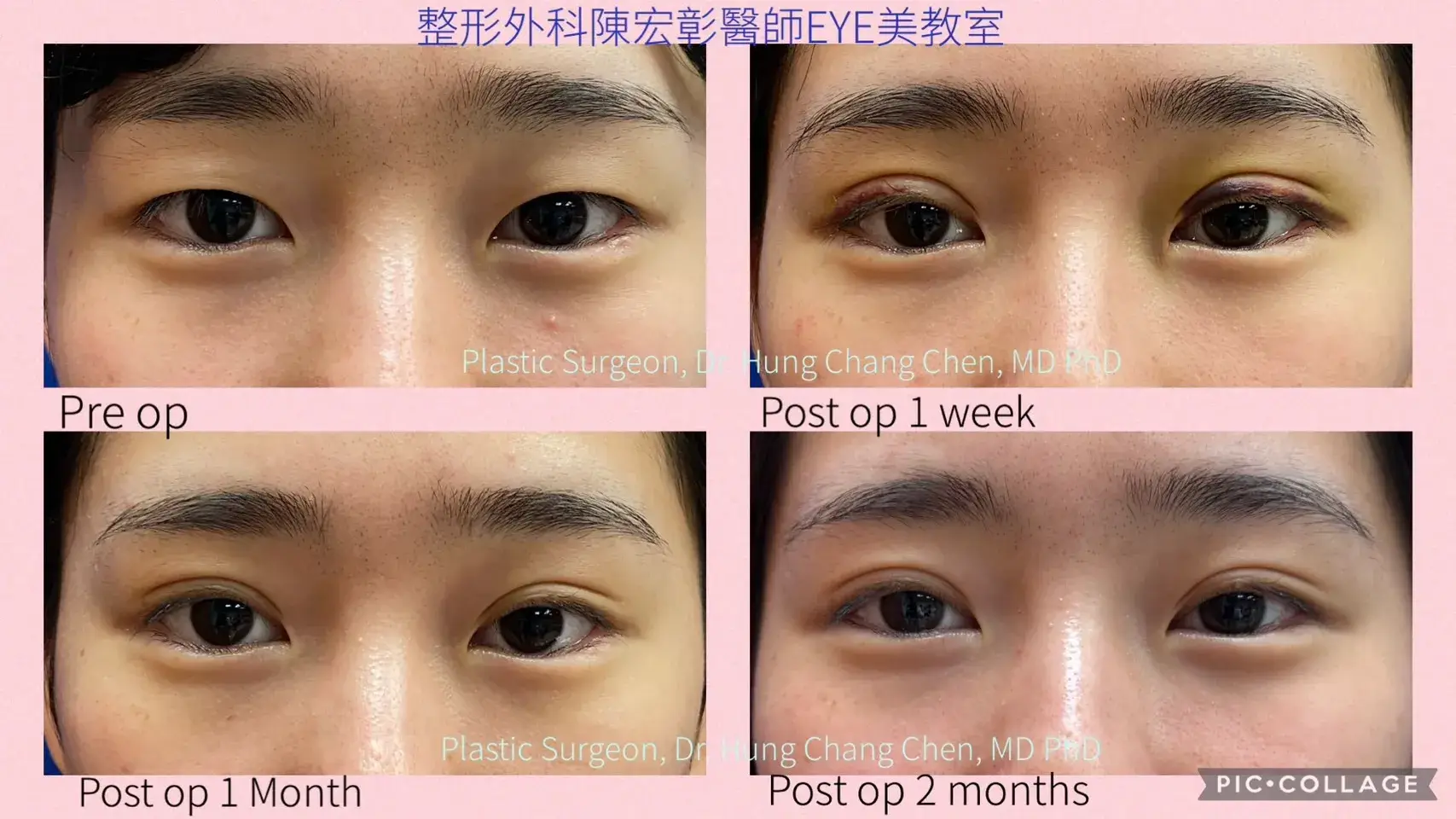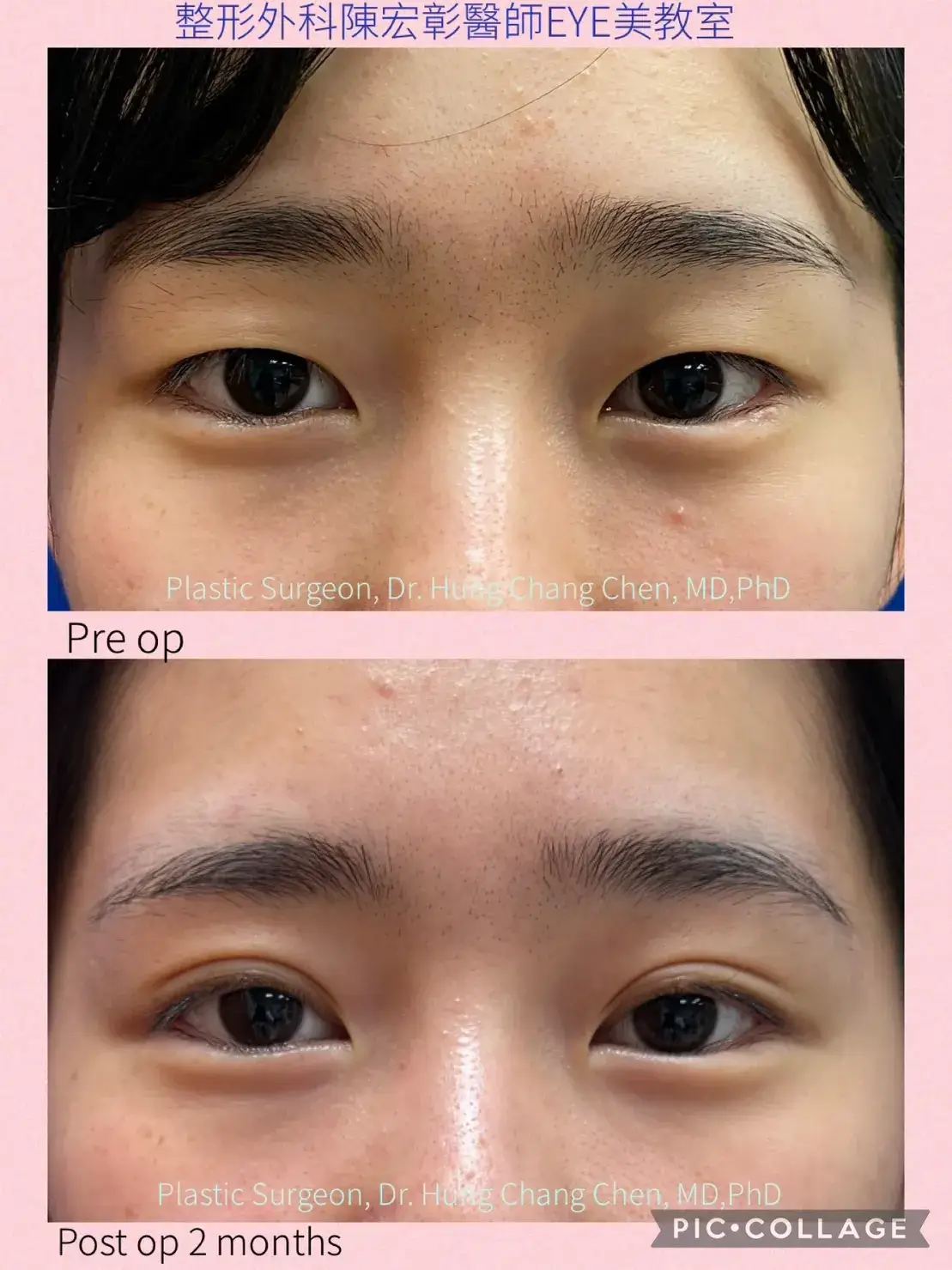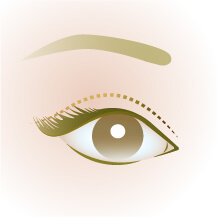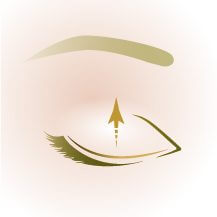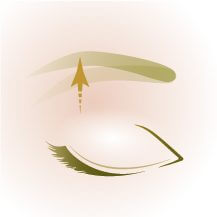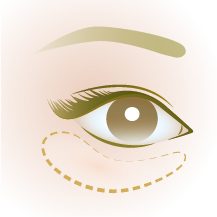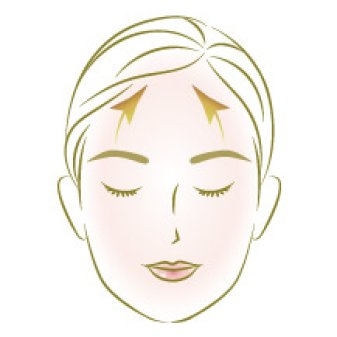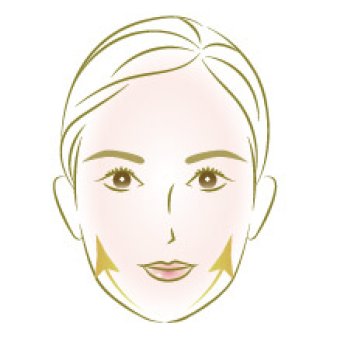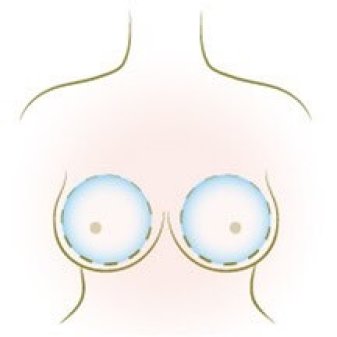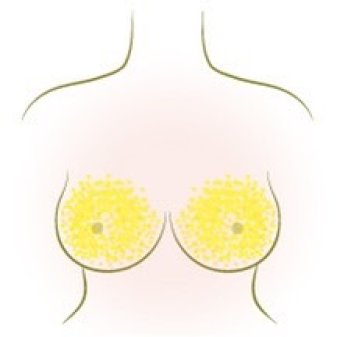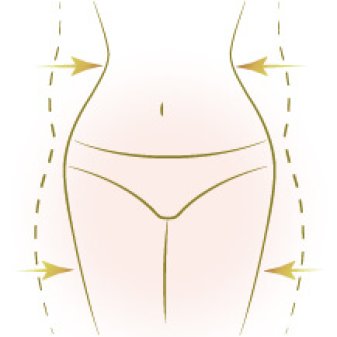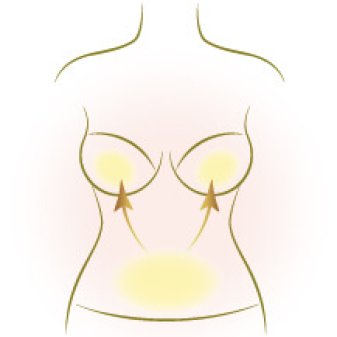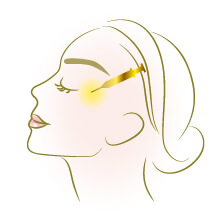Eye Surgery
Non-Incisional Double Eyelid Surgery
BLEPHAROPLASTY
BLEPHAROPLASTY
Non-Incisional Double
Eyelid Surgery
- Principle
- Before and After
- Case Study
Non-incisional double eyelid surgery is a relatively short operation time and quick recovery period, and it is also a surgery with high patient satisfaction. Suitable for young patients with thin eyelids. According to Dr. Chen’s expertise, he will always advise patients to utilize sutures to fix double eyelid folds if they can be created with them. The procedure is straightforward, the recuperation time is brief, and patient satisfaction is very high. After the operation, it is rather simple to adjust if you don’t like it. Before performing the procedure, the doctor will simulate the production of various heights of double eyelid folds using double eyelid hooks. The patient is instructed to evaluate his appearance in a mirror to see whether he likes the high double eyelid fold’s form and curvature. The appearance of the double eyelid is typically mimicked before surgery, which will be close to the final outcome once the swelling has subsided.
Would sewing create the double eyelid crease, and if so, will it make it disappear quickly? Although the double eyelid crease’s suture may become loose and dissolve, this is not as common as people may think. Disappear of double eyelid wrinkles don’t happen as frequently as people think. Typically, the double eyelid folds are covered rather than disappearing because the eyebrows and eyelids fall to hide them. Consequently, double eyelid surgery may be a better solution for patients with drooping brows, drooping eyelids, excessive eyelid fat, etc. To fix it, incisional double eyelid surgery might be more appropriate. Patients must carefully consider their options and consult with their doctors to choose the best action before having surgery.
Would sewing create the double eyelid crease, and if so, will it make it disappear quickly? Although the double eyelid crease’s suture may become loose and dissolve, this is not as common as people may think. Disappear of double eyelid wrinkles don’t happen as frequently as people think. Typically, the double eyelid folds are covered rather than disappearing because the eyebrows and eyelids fall to hide them. Consequently, double eyelid surgery may be a better solution for patients with drooping brows, drooping eyelids, excessive eyelid fat, etc. To fix it, incisional double eyelid surgery might be more appropriate. Patients must carefully consider their options and consult with their doctors to choose the best action before having surgery.
Non-incisional double eyelid surgery
People who are younger and do not have loose or sagging eyelids are suitable for
sutures to create double eyelids. Currently, Dr. Chen frequently uses the following
two suture techniques.
1. The first type, “Stapling Double Eyelid Surgery,” is more frequently heard. Using sutures to flow back and forth through the conjunctiva on the inner surface of the eyelid and the skin outside the upper eyelid, this surgical procedure will leave 6–8 incisions approximately the size of a pinhole above the eyelid. The sutures will be used to mimic the fibers connect between skin and levator muscle. The eye lift power system and the surface of the eyelid are connected by fibers that extend to the epidermis, creating double eyelid folds. Due to the small size of the wound, almost no scar is visible, and the postoperative traces are concealed in the folds.Unless the wound is accidentally infected or inflamed, white dotted scars may appear.
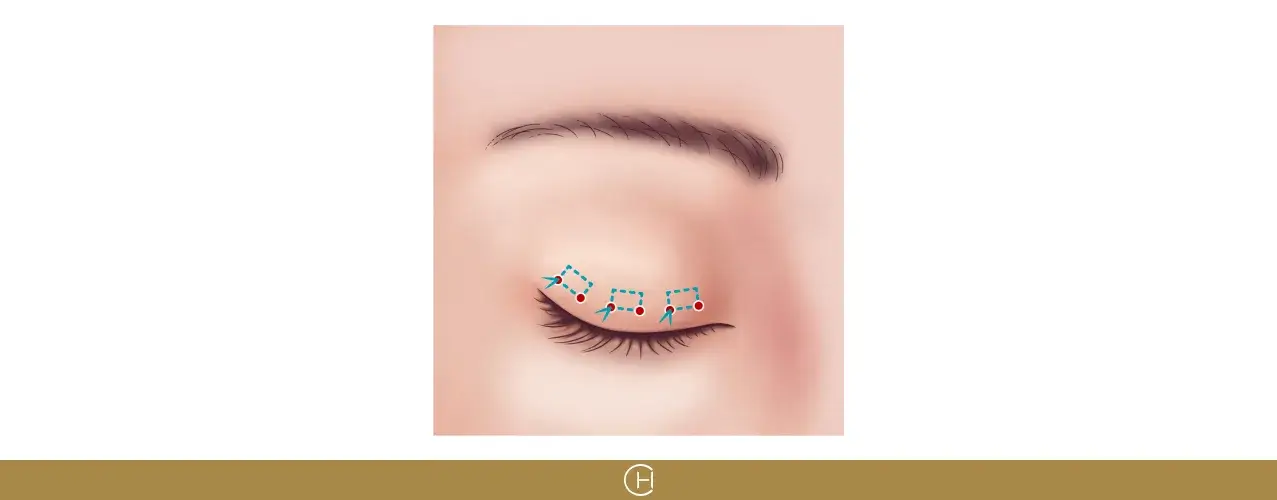
2. The second type, "Seamless Non-incisional Double Eyelid Suture". A fully
seamless non-incisional double eyelid suture procedure is possible for some
people. The connection between the eye lift power system and the eyelid surface
is made to form a double eyelid crease through 6–8 conjunctival incisions that
are less than 1 mm in diameter. The upper eyelid is uninjured, but the inner side
of the conjunctiva has a wound. You can use skin care and makeup right away
after surgery because there is no need to clean the wound or change the
dressing.
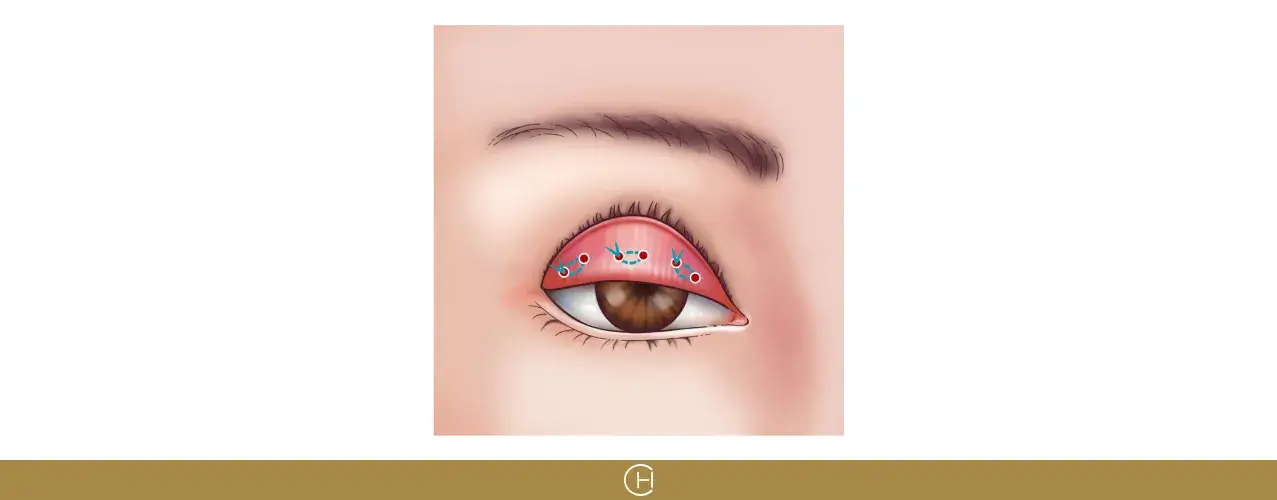
As for which kind of non-incisional double eyelid suture surgery is suitable for you, you need to visit the outpatient clinic and on-site evaluation by the doctor to decide the most suitable surgery method for you.
| Surgical Methods | Stapler Stitching Non- Incisional Double Eyelid Surgery | Seamless Non-incisional Double Eyelid Surgery | Incisional Double Eyelid Surgery |
|---|---|---|---|
| Suitable Candidate | young people, single eyelid, hidden loose eyelid | young people, single eyelid, hidden loose eyelid | Single eyelid, Have excess fatty deposits causing puffiness, Have loosening or sagging skin causing excess folds |
| Surgery Time | 1 hour | 1 hour | 1~2 hour |
| Anesthesia Method | Local anesthesia | Local anesthesia | Local anesthesia |
| Pros | quick recovery after surgery, natural, simple post-operative eyelid fold adjustment | The eyelids are completely wound-free, after procedure can immediately apply makeup and eye shadow, short operation time and quick recovery period, naturally | Removes loose upper eyelid fat and skin. *but not recommended for "too much" removal of thin upper eyelid and fat |
| Cons | Unable to improve the aging and sagging of eyebrows and eyelids | It is difficult to adjust the eyelid fold after surgery | Difficult to rebuild and longer recovery period |
| Recovery Period | 7 days | 7 days | 7~14 days |
| Close to Natural Look | Normally one month, The higher the non- incisional double eyelid fold, the longer the recovery period | Normally one month, The higher the non- incisional double eyelid fold, the longer the recovery period | 2-3 months above |
The expertise of Dr. Chen in patient care is "surgical comparison." The above methods all require full communication between the patient and the doctor to discuss the most suitable surgical method for the patient.
Preoperative Preparation and Anesthesia
1. Before surgery, please let your doctor know if you have any drug
allergies.
2. Anticoagulant medication must be stopped one week before to surgery in order to prevent intraoperative and postoperative bleeding.
3. Smoking should be avoided for at least two weeks before to and following surgery.
4. It is advised that medical professionals regulate and stabilize systemic disorders such as excessive blood pressure, heart disease, diabetes, abnormal thyroid function, etc. before undergoing surgery.
5. Please let your doctor know before surgery if you or anybody in your family has keloid or hypertrophic scars.
6. Because the patient’s eyes must frequently cooperate during the procedure to ensure precise symmetry, it is advised to do eyelid surgery while the patient is under local anesthetic.
2. Anticoagulant medication must be stopped one week before to surgery in order to prevent intraoperative and postoperative bleeding.
3. Smoking should be avoided for at least two weeks before to and following surgery.
4. It is advised that medical professionals regulate and stabilize systemic disorders such as excessive blood pressure, heart disease, diabetes, abnormal thyroid function, etc. before undergoing surgery.
5. Please let your doctor know before surgery if you or anybody in your family has keloid or hypertrophic scars.
6. Because the patient’s eyes must frequently cooperate during the procedure to ensure precise symmetry, it is advised to do eyelid surgery while the patient is under local anesthetic.
Recovery process and post-operative care
1. To lessen discomfort and bruising, it is advised to apply ice for 10
minutes every hour for the first 5-7 days following eyelid surgery.
2. For three days following surgery, prophylactic oral antibiotics, anti- inflammatory, analgesic, detumescence, and other medications will be administered.
3. To replace the dressing, eye ointment will be prescribed by eyelid wound care. Once each in the morning and evening, change your clothes. Clean the site with normal saline or boiled water, remove any scabs or secretions, and then apply fresh ointment.
4. A week following the procedure, the sutures will be taken out.
5. It is advised to warm the skin (to the temperature of face wash water in the morning in winter) for 10 minutes every hour after the stitches are removed to hasten the healing of bruises.
6. Each person's level of postoperative swelling and bruising is different. It usually becomes apparent three to four days following surgery, and most people can feel better approximately two weeks later.
7. After the procedure, you can wash your face as usual, take a bath, dry your skin right away, and then apply the ointment. But refrain from swimming, wading in the stream alongside the sea, and taking a dip in the hot springs.
8. After surgery, stay away from strenuous activities like hard training, running, mountaineering, rock climbing, etc. It may raise blood pressure, result in bleeding, or leave wounds open.
9. The diet is generally healthy, but stay away from alcohol, smoke, and spicy food (too spicy and salty)
2. For three days following surgery, prophylactic oral antibiotics, anti- inflammatory, analgesic, detumescence, and other medications will be administered.
3. To replace the dressing, eye ointment will be prescribed by eyelid wound care. Once each in the morning and evening, change your clothes. Clean the site with normal saline or boiled water, remove any scabs or secretions, and then apply fresh ointment.
4. A week following the procedure, the sutures will be taken out.
5. It is advised to warm the skin (to the temperature of face wash water in the morning in winter) for 10 minutes every hour after the stitches are removed to hasten the healing of bruises.
6. Each person's level of postoperative swelling and bruising is different. It usually becomes apparent three to four days following surgery, and most people can feel better approximately two weeks later.
7. After the procedure, you can wash your face as usual, take a bath, dry your skin right away, and then apply the ointment. But refrain from swimming, wading in the stream alongside the sea, and taking a dip in the hot springs.
8. After surgery, stay away from strenuous activities like hard training, running, mountaineering, rock climbing, etc. It may raise blood pressure, result in bleeding, or leave wounds open.
9. The diet is generally healthy, but stay away from alcohol, smoke, and spicy food (too spicy and salty)
Sequelae and Complications
1. Asymmetry is the most frequent side effect of eyelid surgery, and
some individuals require revision surgery.
2. There is a danger of infection, hemorrhage, inadequate wound healing, etc. with any operation.
3. Although all surgeries leave scars, the plastic surgeon will meticulously stitch and use extremely thin sutures to tuck the scars into the creases of the skin and the borders of the hair, making them less noticeable and more difficult to locate. Even so, the scar may still be momentarily red and elevated (1-2 months after the operation) until it stabilizes, but after two to six months the scar will often gradually fade and become less noticeable.
2. There is a danger of infection, hemorrhage, inadequate wound healing, etc. with any operation.
3. Although all surgeries leave scars, the plastic surgeon will meticulously stitch and use extremely thin sutures to tuck the scars into the creases of the skin and the borders of the hair, making them less noticeable and more difficult to locate. Even so, the scar may still be momentarily red and elevated (1-2 months after the operation) until it stabilizes, but after two to six months the scar will often gradually fade and become less noticeable.
